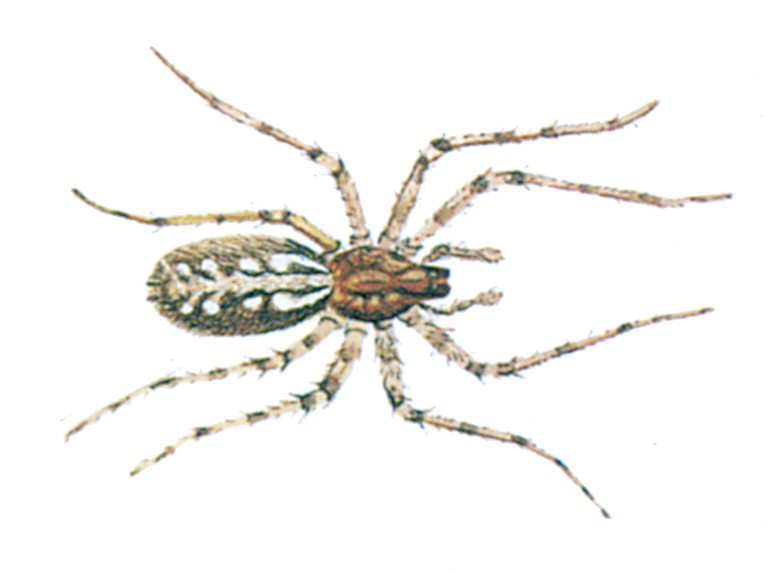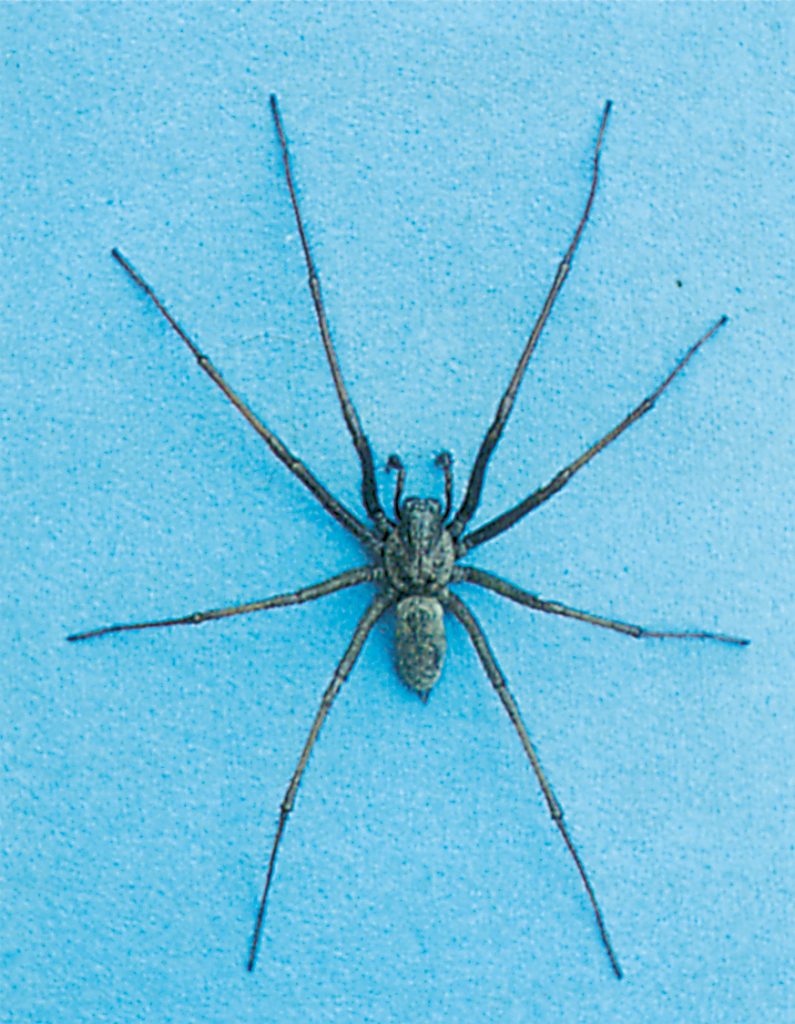(Latin: Tegenaria domestica)

This is one of the largest spiders found in Europe, and it also occurs in many other parts of the world. The body alone may be as much as 1 cm long and the long legs can give a span of 5-6 cm.
This spider can be found in all sorts of places where there is sufficient humidity, such as bathrooms and outhouses. It also occurs under the eaves of houses and in stone walls.

Unlike that of many other species, the web of this species is not a regular work of art, but consists of an apparently tangled mass of threads, often covered in dust. It is usually constructed in a corner and is then triangular, with the retreat hole where the spider lives right in the corner itself.
The threads are not sticky, but when a fly or other insect lands on the web it tumbles around among the threads. This warns the spider which comes out and overcomes it. Mating takes place in May-June and a little later the eggs are laid in a special cocoon, often covered with sand grains, which is suspended either in the web itself or in a suitable place nearby.
This very common spider can be found throughout the year. Specimens seen running across the floor are merely chance visitors, for they will scarcely be able to establish themselves in our living quarters, where the atmosphere is much too dry for them.
They have very poor vision and the best way to catch them is to hold an empty jam jar in front of them and give them a push from behind, and they will move straight into the trap.




